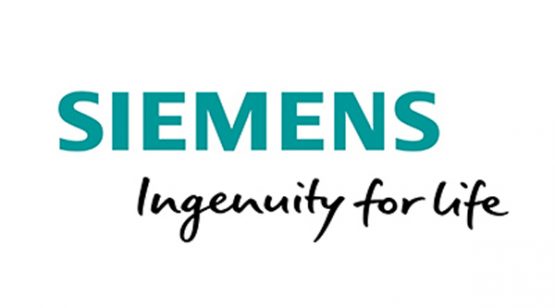
Get ready to pack up your laptop and hit the road!
Today, I specialise in facilitating remote work. And it was an experience ten years ago that turned a light bulb on for me — in a way I would have never expected.
I was living in California at the time and belonged to a social community interested in the future, technology, and staying healthy. Every Sunday, we’d meet up for a hike together. One member of the group was particularly interesting to me because he was working on a startup idea I’d never encountered before: he wanted to eradicate death.
To the outside world, it appeared that he was building an online project management tool. That was a very “normal” startup idea, even for ten years ago. But what most people didn’t know was that he was building the tool so that longevity scientists from all over the world could collaborate and solve the “problem” of aging.
He had found that the best people needed for this unusual collaboration were not living in the same place. So his vision was to build a tool that they could use to work together remotely.
It was a true “aha experience” for me. Once we remove the issue of being geographically dispersed, we can gather the best, most enthusiastic people together virtually to work on the most challenging problems imaginable.
I was hooked by the concept and started interviewing people and companies working remotely to see what they were doing. Down the rabbit hole I went!
In the past, we had to go to a specific geographic place in order to access the information we needed for our work. Now, that information is likely accessible from anywhere. And this gives us the opportunity to play with new ways of working and new business models.
I’m increasingly seeing a move from a model of work-life balance, which assumes that work and life shouldn’t overlap or blend, to work-life fusion, where the lines between work and life blur.
Work and Life: No Longer at Odds
Jeffry Hesse is an agile coach working with a distributed development team of approximately 40 people at a company called Sonatype. He loves his work. He also loves mountain climbing, photography, and spending time with his grandmother.
Because he can work from anywhere, Jeffry combines his passions by working while traveling. He started by trying an experiment with his remote team. He spent one month traveling in Argentina — and didn’t tell his colleagues he would be on the road.
He wanted to test how productive he could be while traveling, and if anyone on the team would notice.
Admittedly, it was hard. Finding a decent internet connection in Argentina was one of the most challenging aspects. He tried coworking spaces and staying with friends — and his technical know-how came in very handy while experimenting with various VOIP phones. But while it was hard work, and sometimes shaky, he managed to get his work done without the distributed team noticing that he was on the road.
While being a digital nomad may seem like a radically unconventional way of working compared to the traditional 9 to 5 job, it gives us a glimpse into what’s becoming possible…and increasingly common.
What Does It Mean Today to Be “Present”?
The tools that allow us to work in new ways are developing at breakneck speed. One of the most exciting examples of this is telepresence. Telepresence is a combination of technologies that give you presence somewhere other than your actual location. Your smartphone and standard video conferencing tools — even Facetime — can all be considered forms of telepresence.
My favorite form of telepresence? Robots.
The Revolve Robotics Kubi, for example, allows someone to call in (via video conferencing) to any tablet device. The difference is that you can move the tablet from side-to-side and up and down and control where you are looking from your own laptop.
For instance, if you are a remote participant at a meeting where everyone else is sitting together in a room, you can turn yourself to see who is talking. Other telepresence robots allow you to beam in to what is basically a tablet on wheels, and drive yourself around using the arrow keys of your keyboard. Schools use these for kids who can’t attend classes in person. Museums use these to give remote tours. Even doctors use them when specialists are scarce.
These interactive sensory experiences bring us closer to replicating what it’s like to be together in the same room. And the technology gets better and less expensive every year, opening new options all the time. Holograms are just around the corner!
How Businesses Are Changing
Because of these new technologies, more and more people are like Jeffry, seeking to balance their work with the freedom to pursue their passions. What it means to actually “be at work” is changing rapidly — businesses are evolving as well. Here are three examples:
A Virtual Network With Global Impact
Happy Melly is a social entrepreneurship network of individuals and small businesses dedicated to happiness at work. Supporters include coaches, creatives, authors, speakers, managers, and entrepreneurs. Members of Happy Melly help amplify and globalise great business ideas through virtual and in-person workshops, blogs, guides, books, tools, and videos.
I joined the network to get business advice from people who shared my same purpose and values. With the help of “colleagues” from all over the world, I learned how to structure and scale my company, Collaboration Superpowers, so that myWork Together Anywhere workshop could be offered online and in person around the globe. I’m also now the remote team manager for Happy Melly.
Serendipity Turned Them Into a Team
The team at StarterSquad first started working together (remotely) when a client hired them for a software development project. They didn’t know each other before the project started, but over time, the team clicked.
At one point, the client unexpectedly ran out of money — but the team members weren’t ready to part ways. They decided to find other clients so they could stay working together. They now operate as a self-organised team of entrepreneurs, specialising in building minimum viable products for software startups. In addition, they offer seed funding for startups whose ideas they believe in.
Forget About Facetime
Another company, Teamed.io, prides themselves on having no central office, no meetings, and no phone, Skype, or video calls. The company is made up of a large group of freelance software developers that have never met or spoken to each other. They work entirely through chat on task management systems.
Specific people are brought together for projects depending on the skillset that’s needed. Projects are broken down into very small tasks. Programmers are paid as they complete tasks, and they are not paid if the tasks are not completed. When the project is over, the team is dissolved and everyone moves on to other projects.
Extreme? Perhaps. But it does show ways of working that were never before possible.
Leveraging the Remote Advantage
There are numerous benefits to being able to work from anywhere. Some resonate most for solopreneurs and digital nomads as a source of empowerment to work and travel. Others please HR departments and hiring managers who need to build virtual teams or want to offer flexible benefits to their employees. A few are aiming to raise visibility around worker happiness and the environmental benefits of not commuting.
The ability to tap into information and collaborate with colleagues from anywhere has opened up new possibilities for work-life freedom. People can work on the things they are most passionate about, and businesses can hire people who love what they do versus people who are just doing their jobs.
If you haven’t thought about what’s possible with remote collaboration options in a while, you might be surprised by what’s happening — and what’s possible for you as well! I encourage you to do some more exploring. We’ve come a long way, and it’s only getting better from here.
By: Lisette Sutherland from Collaboration Superpowers





